symptom of mental disorder
In the correct clinical application, mental disorder is the term used to designate changes from normal mental functional that are sufficient to become recognized as clinical disorders. It is only when these changes become persistent, repetitive, recognizable and exaggerated expressions of disorders thought, disturbed feeling and disruptive behaviour, that the presentation is correctly referred to asa a mental disorders. In effect, mental disorders signifies an inability at that time ti adapt, modify or change behaviour in response to changes in life events or environmental circumstances.
Classification of mental illness and disorders
Classification of mental disorders flourished during the nineteenth century. Many symptoms were reported during earlier writings, but there was a lack of formal classification of mental disorders until the twentieth century emil Kraepelin was a pioneer in the classification of mental disorders. His description of dementia praecox, later referred to as schizophrenia, and manic depression fell short because he focused primarily on the course of mental illnesses rather than the etiology. In spite of major shortcomings, his work inspired others to create a formal classification of mental disorders (Deutsch, 1937).
EPIDEMIOLOGY AND MENTAL DISORDERS : DEFINING DISEASE
Second, at one time many psychiatrists and therapists felt that for a variety of mental disorders there was no clear dividing line between normal and disease. This too was troubling for epidemiologists who usually do not have much trouble defining diseases. The diagnosis of a mental disorder is much more complicated, however. Most persons feel blue or depressed some days, or after a personal disappointment, and nearly all normal persons have a period of profound mourning after the death of close friends or family.
To understand the epidemiology of mental, disorders, it is necessary to have some understanding of psychiatric terms.
Mood Disorders. Mood disorders are most often characterized by feelings of depression. The most common mood disorders in DSM is Major Depressive Disorders, which is diagnosed when a set of symptoms associated with depression (feeling “blue, sad, or depressed,” losing interest in previously pleasurable activities, and’or having thoughts about death or suicide) have been present for 2 weeks or more.
Schizophrenia. Schizophrenia is a major psychiatric disorder characterized by symptoms of psychosis or loss of touch with reality. These symptoms include delusions (such as beliefs that order persons can read one’s mind or are controlling one’s thoughts or movements) and hallucinations (most commonly hearing “voices”).
Substance abuse disorders. Thi scategory includes abuse of both alcohol and a variety of other substances. The DSM-IV-TR criteria require that a person show evidence of dependence on drugs of alcohol to be classified as having a drug or alcohol related disorder.
Anxiety disorders. The common DSM-IV-TR diagnoses in this category include Obsessive-Compulsive Disorder, phobias, Generalized Anxiety, and Panic Disorder. A common obsessions might be that one’s hands are dirty even thought they have been recently washed. Symptoms must also be present for a specified period of time. Panic Disorder is a condition in which one experiences brief, intense feelings of anxiety associated with physical symptoms (such as rapid heart rate, sweating, dizziness) in the absence of a definable physical diagnosis. The diagnosis is made only when a certain number of episodes occur within a specified period of time.
Cognition is a mental process by which an individual is aware of and maintain good relationships with their environment and the environment in the outside environment (known function).
The parts of the process of cognition is not a power of separate, but actually he is the way of an individual to function in relationship and environment.
1. Disturbances of sensation and perception
a. Sensation or sensation is knowledge or awareness of some stimuli. There are 6 kinds of sensations, namely: race soy sauce, taste around, a sense of smell, sight, hearing, and health. For each there should be a stimulating sensation that can be interpreted as any change in external energy that can lead to an answer.
b. Perception, or perception, is the awareness of the stimuli are understood. So the perception is sensation plus the understanding, which comes from the interaction and association process various incoming stimuli or in other words can be described as an experience of objects and events existing at the time.
Various kinds of sensation and perception disorders:
1. Sensation disorders
a. Hiperestesia is a condition in which abnormal increase of the sensitivity of the sensing process, whether hot, cold, pain or touched.
b. Anesthesia is a state diman not found at all in the sensory feelings. Be comprehensive in nature, local or part of it. Distinguished on functional anesthesia anesthesia affected areas are not in accordance with the requirements usually lead to anesthesia.
c. Paraesthesia was eadaan diman changes occurring in the normal sense (usually taste around), such as tingling.
Paraesthesia can be: diman state Acroparestesia is happening feeling "thickening" at the ends of the extremities. Aestereognosis is a state of failure diman known form of an object by feeling around.
d. Synesthesia is a condition in which the appropriate stimuli with a certain sense, be taken by the other senses.
e. Hiperosmia is a situation where an excessive increase in olfactory sensitivity (function smell).
f. Anosmia is a condition in which there is a failure / loss of power of smell either partially or entirely.
g. Hiperkinestesia are circumstances where an increase in excessive sensitivity to the feelings of the body motion.
h. Hipokinestesia is a state where a decline in excessive sensitivity to the feelings of the body motion.
2. Perception Disorder
a. Illusion is a misperception / false, where there is or ever adarangsangan from the outside. Illusions can occur in everyday life, one can express emotion or a very strong motivation to do the wrong interpretation of the image sensing. The situation is usually consciously repressed and later diintepretasikan dynamically will be an illusion.
b. Hallucination is a false perception without ijumpai any external stimuli. Although seen as something that "imaginary'', hallucinations actually part of the mental life of patients who" terepresi ". Hallucinations can occur because the basics of organic functional, psychotic, or hysterical.
The types of hallucinations:
1) Hallucination auditory (auditif, acoustic)
The most common form of sound or noise mendenging that has no meaning, but more often heard as a word or phrase that means
2) Hallucinations of vision
More common in delirium conditions (organic disease). Normally often occur together with a decrease in consciousness, creates fear because the images are frightening.
3) Hallucinations of smell (olfaktorik)
Usually a certain smell and feeling uncomfortable, symbolizes guilt in people. The smell is represented as the patient experience is considered as a combination of moral.
4) Hallucinations tasting (gustatorik)
Although rare, usually in conjunction with olfactory hallucinations, the patient was tasting something.
5) Hallucinations touched (tactile)
Feeling touched, touched, blown, or like a caterpillar, moving ynag under kulit.terutama on toksis state of delirium and schizophrenia.
6) Sexual Hallucinations, including hallucinations around;
Patients felt tangible and raped, often in schizophrenia with the supposition greatness terutamamengenai organs.
7) hallucination kinesthetic;
The patient felt his body moving in a space or a limb moved.
8) Hallucination visceral;
The emergence of a certain feeling in his body.
B. Attention Disorder
Attention is the centralization and concentration of energy rate in a cognitive process that comes from the outside due to a stimulation. In order that the attention can get results, there should be 3 conditions are met, namely: inhibition, here all the stimuli that do not include the object of attention should be removed; aperseption, who presented only thing closely related to the object of attention; adaptation, tools that used to function properly due to adjustments required for the job object.
Some forms of attention disorders:
- distractibility is easily diverted attention by stimuli that does not mean, for example: the sound of mosquitoes, the sound of the ship, people pass by, and so on.
- aproseksia is a situation where there is the inability to observe diligently the situation or circumstances without regard to the importance of the problem.
- hyperproseksia is a condition in which the concentration or the concentration of attention overload, so it narrows the existing perceptions.
C. Memory disorders
Memory (memories, memory) is the ability to record, store, produce content and signs of consciousness. So the memory process consists of 3 elements, namely: records (keep in mind, reception and registration), storage (holding, retention, preservation), call return (recalling).
Disruption of memory occurs when there is interference on one or more of 3 elements, factors affecting the physical state (fatigue, pain, anxiety) and age. After 50 years of age memory function will be reduced gradually.
Here are some forms of memory disorders:
1. Amnesia
Inability to recall the existing experience, may be partial or total retrograde or antegrade and can be caused by organic factors or psychogen. Organic cause, damage to the elements of the recording and storage, whereas for the calling process psikogen for re-blocked by psychological factors. In psikogen amnesia: no disturbance of consciousness, there is no damage to intellectual functioning, is selective against unpleasant events, healing can occur suddenly and perfect.
2. Hypernemsia
A state of overload call back so that one can describe the events very carefully and came to the things that a nicety. Often in circumstances amnia, paranoia, and catatonic.
3. Paramnesia (forgery or pemiuhan memory)
Is a disorder in which a deviation occurs or pemiuhan of old memories are well known. This distortion occurs due to the calling process paramnesia useful as a protection against fear.
a. confabulation a condition where a person consciously fill the holes in his memory with a story that does not match reality, but the corresponding believe in the truth.
b. Falsification retrospective: is called the illusion of memory that was formed in response to affective needs. Patients will give a false conclusion of an event by adding the things that made their own small or connect with experiences that are not based on reality at all.
c. Déjà vu (illusion of memory): a feeling as if it never saw the actual something had never seen. This situation arises when the time had ties with the Association of past experiences that deliberately forgotten, is usually the experience is central to the conflict are consequently repressed.
d. De Jamais vu: a false sense of an actual event that has ever happened but this time felt not or have never experienced or seen. These symptoms often occur in schizophrenia, psychoneurosis, temporalis lobe lesions, such as fatigue and toxic epilepsy.
D. Disorder Association
Association is the mental process by which a feeling, impression or memory representation tends to give the impression or image of the response / other concept, which was previously associated with it.
In the normal mental life, the association occurs continuously with certain patterns. Determain factors in process patterns of association among others:
1. environmental conditions at the time.
2. events that had happened.
3. learning and previous experience.
4. expectations and habits of a person.
5. needs and emotional history.
Some forms of interference of association:
1. retardation (deceleration); is the association that lasted more slowly than usual.
2. poverty of ideas; a situation where there is a lack of association which can be used.
3. perseversi; a situation where an association repeated continuously back as if describes someone no longer able to let go of ideas that have been spoken.
4. flight of ideas (ideals running, jumping mind); a situation where the flow proceeded in a rapid association that appeared from the change content of the conversation and thought. Here was an idea not yet completed, followed by other ideas.
5. inkohoresi; a situation where the flow of association is not related to each other. Can be shaped as a "hodgepodge word" (word salad) or a neologism (formation of new words that do not mean). Inkohorensi can be described as a "loose association".
6. blocking (resistance, impact); a state where there is a failure to form associations, ranging from the situation as a result of a strong emotional reaction to the blocking of old such as found in severe mental illness. Here, people can not explain why he stopped.
7. aphasia; a situation where there is a failure in part or in full to use or understand language.
E. Interference considerations
Considerations (assessment) is a mental process to compare or evaluate several options in a framework by giving grades to decide the purpose or intent of an activity. Comparing here include the term of "great importance", "truth", his kindness, beauty ", and so on. Three things that would support the consideration of:
- sensory apparatus capable and have a thorough perception of discrimination.
- memory full of data as a basis for comparison.
- motor officers who have the skills or the ability to decide and the inhibition mechanism for excessive activity.
F. Thought Disorder
Public mind is to put the relationship between the various parts of one's knowledge. Thinking is a process to unite or connect ideas by thinking, forming the sense to draw conclusions, as well as the processes to form new ideas. So in the process of thinking involves the consideration process of understanding, memory, and reasoning.
The normal thinking process containing the current idea, symbol, and associations that focus on the goal and raised by a problem or task that can lead to a solution-oriented reality.
Factors that affect the process of thinking, namely:
- Factor somatic (brain disorders and fatigue).
- Psychological factors (emotional disorders and psychosis).
- Social factors (noise and a certain social circumstances).
G. Awareness Disorder
Awareness is the ability to make contact with the environment and himself through the senses and a limitation on the environment and himself. If consciousness is good, it happens orientation (time place and person) and also understanding and information will be used effectively (through memory and consideration).
The forms disturbance of consciousness:
1. Awareness quantitative
a. Decreased consciousness; an awarness with the ability of perception, attention and thought as a whole decreases.
1) Apathy (like a sleepy consciousness)
2) Somnolen (like a sleepy consciousness right, member response when stimulated)
3) Spoor (only react with strong stimuli, memory, orientation, and consideration is lost)
4) Subkoma and comma (do not get any reaction to stimuli)
b. Awareness raising; state increased reaction to a stimuli, caused by toxic substances that stimulate the brain or by psychological factors.
2. Awareness qualitative
There is a change in the quality awareness, can be caused by toxic conditions, organic, and psikogen.
a. stupor; because of factors found in the state psikogen Katatonia, depression, epilepsy, fear, and dissociation reactions.
b. Twilight state (state early, dusk, twilight); loss of memory on the basis of which psychological disturbed consciousness and in some condition very obscure, so people do not recognize the environment. Accompanied by hallucinations can hear, so it can perform certain actions. Usually people forget about the action during the evening and as if in a dream, take several minutes to several days.
c. Fuge; a period of decreased consciousness with the run cause a lot of stress, but can maintain the habit and skill.
d. Confusion (confusion); interference conditions for the destruction of sensory apparatus which found difficulty understanding, disruptive, disorientation associated with dysfunction.
e. Tranco (trans); condition consciousness without a clear reaction against environment that usually begins suddenly looked like a blank countenance, lost his mind, or daydreaming. Can be generated by the trust hipnosa or ceremony.
3. Disturbance orientation
Orientation is the ability to recognize environment and relationship with time, space, and to himself and others. Disorientation disorientation or disruption can occur as a disturbance of consciousness, about the time, about the place, and about people. Disorientation can occur in any of mental disorders where there is a great damage of memory, perception, and attention.
H. Interference Will
The will is a process which wishes to be considered and then decided to be carried out until reaching the goal.
Interference forms will:
a. Abulia (willingness weak); a state of inactivity as a result of the inability to make decisions or initiate a behavior.
b. Negativism; inability in acting on the suggestion and not infrequent implement something contrary to the sugestion.
c. Stiffness (modulus); inability to have flexibility in deciding to change a behavior, such as stereotypes or attitudes which are mechanical movement done repeatedly.
d. Compulsions; a state where a feel encouraged to perform an action, which is recognized as an irrational or useless.
1. Kleptomania (compulsive stealing), which is often stolen goods that have symbolic meaning and are usually not valued.
2. Pyromania (compulsive burning), is seen as a symbolic form of sexual gratification.
3. Washing hands repeatedly with can not be prevented or controlled.
I. Emotion and affective disorders
Emotion is a conscious experience and give effect to the activities of the body and produces organic and kinetic sensations. Affects the life of feeling or tone of one's emotional feelings, pleasant or not, that accompanies a thought, usually long and often accompanied by physiological components.
The forms of emotional and affective disorders:
a. Euphoria; pleasant emotions, the cheerful, very happy, happy that excessive and if not suitable circumstances, it demonstrates the existence of a mental disorder. People who euphoria usually optimistic, confident, and assertive in attitude.
b. Elasi; excessive euphoria is often accompanied by motoric emotion and often become irritable.
c. Eksaltasi; elasi excessive and usually accompanied by his greatness (greatness supposition).
d. Eklasi (excitement); passion accompanied by excessive security, peace, and quiet usually associated with strong religious feelings.
e. Inappropriate affect (the affect that is not appropriate), is a symptom of emotional disturbance which found differences seem clearly betwen emotions with situations that cause it, such a laugh when there was a disaster.
f. Affects the stiff (rigid) is a state where a sense of heart theta maintained, although there are stimuli that usually cause excessive emotional reactions.
g. Labile emotion is a phenomenon where there is excessive instability and emotional sort, quick change from one emotion to another emotion.
h. Anxiety and depresion is visible symptoms of facial expressions or behavior.
i. Emotion and ambivalence is the opposite affect that arise along with the person, an object or situation, hate but miss.
j. Apathetic, less or no emotional reaction at all in the circumstances which should lead to emotions.
k. Emotions are dull and flat, deduction or none at all the signs of affective expression.
J. Interference Psychomotor
Psychomotor body movements that are influenced by the state of the soul, so is the affect with which the body and soul. Also include conditions, Motoric behavior, or motor aspects of a behavior.
The forms of psychomotor disturbances:
a. Increased activity.
1) Hyperactivity, hiperkinesia, activity and excessive movement response with increasing intensity.
2) Hipertonisitas, increased muscle tone handles.
3) catatonic agitated Gaduh, motor activity does not seem to aim, many times, and seemed not to be influenced by external stimuli.
b. Activity decreased
1) Hipoaktivitas, hipokinesia, activities and movement intensity decreases with a decreasing response.
2) Motor slowness, decreased overall activity, e.g., in the catatonic stupor.
3) Atonisitas, tone and condition of abnormal muscle contraction, can be completely or partially.
4) Paralisa, loss of muscle function bai in whole or in part only.
c. Activity disrupted or inappropriate.
1) ataxia, there is no coordination in the movement in his legs or feet.
2) Apraksia, unable to manipulate objects in a directed way.
3) Atetosis, constant movement, diffuse, such as legs and felt pain.
4) Movement khoreiform, irregular movements continuously controlled not by the will.
5) Spasm, contraction muscles some or all of the not controlled by the will.
6) Tremor, contraction of muscle fibers are light and rhythmic, which are not controlled, can be slow or fast, rough or smooth, regular or irregular.
7) Konvlusi, constant strain on the broad areas of the body and usually with loss of consciousness.
d. Activity repeatedly
1) Katalepsi, rigidly maintaining a certain body position.
2) Flexibility serea, one of katalepsi, which created the position of the body maintained continue.
3) Stereotipi, one movement repeated loss and is not intended.
4) Manerisma, movement stereotype and theatrical, ritual form and always repeated.
e. Automatism he commands according to a command automatically without conscious.
1) Automatism, to do something automatically as a symbolic expression of unconscious activity.
2) Ehopraksia, directly copying another person's movements when he saw.
3) Echolalia, a direct repeat or imitate what other people say.
f. Negativism; a psychological defense is concerned with the fight or argue against what they were told. There are 2 kinds, namely: On (do the opposite of what was ordered); passive (does not carry out what they're told).
g. Aversi, some corrections are aggressive and assertive are shown by opposing, envy, hate, non cooperative, refuse, and sometimes stupor reaction.
References:
Antai-Otong, Deborah. 1995. Psychiatric Nursing Biological and Behavioral Concept. Philadelphia: WB Saunders Company.
Kaplan, Harold I and Benjamin J Sadock. 1995. Comphrehensive Textbook of Psychiatry/VI volume 1. United States of America : West Camdeen Street.
Frisch, Noreen Cavan and Lawrence E Frisch. 2006. Psychiatric Mental Health Nursing 3rd edition. Canada: Thomson Delmar Learning.
Clinton, Michael and Nelson Sioban. 1996. Mental Health Nursing Practice. Sydney: Prentice-Hall of Australia Pty Ltd.
Fontaine, Karen Lee and J Sue Fletcher. 1999. Mental Health Nursing 4th edition. California: Addison Wesley Longman.
Yosep, Iyus. 2007. Keperawatan Jiwa. Bandung: Refika Aditama.
Vaecolis, Elizabeth M., Verna B.C. and Nancy C.S. 2006. Foundation of Psychiatric Mental Health Nursing: A Clinical Approach, Fifth Edition. Philadelphia: Saunders Elsevier.












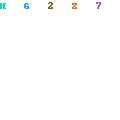
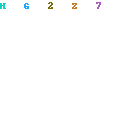



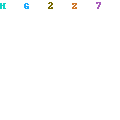
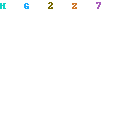
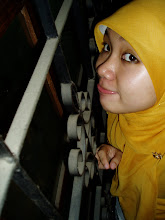




0 comments:
Post a Comment